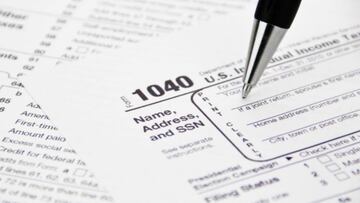What is the $2,000 Saver’s Credit and how to claim it through the IRS
The federal tax code gives Americans numerous fiscal advantages for creating a nest egg for retirement. Here’s how to get $2,000 from the Saver’s Credit.

It’s never to soon to start saving for retirement nor too early to prepare for tax season. The Saver’s Credit can help you reduce your tax liability by up to $2,000 while at the same time putting money away for your golden years.
The credit, also known as the Retirement Savings Contributions Credit, is targeted at lower to middle income taxpayers and is fairly straightforward to claim. However, few know about this credit among the very group of taxpayers that would most benefit from it. Here’s a look at how you can kill two birds with one stone.
Also see:
- When does COLA 2022 take effect in Social Security Benefits?
- Fed will slash stimulus spending in 2022
- Stimulus checks in 2021: how will they affect 2022 tax returns?
- You can claim the Child Tax Credit on your 2022 tax return
What is the Saver’s Credit?
Taxpayers 18 and older who are not full-time students, can claim a tax credit on 10, 20 or 50 percent of their contributions to a retirement account depending on their adjusted gross income (AGI). The Saver’s Credit is capped at $1,000 for single taxpayers and $2,000 for a married couple filing jointly.
If you were enrolled as a full-time student at any time during 5 months of the calendar tax year at a technical, trade, or mechanical school, you will not be eligible to claim the Saver’s Credit. This includes on-farm training courses through a school or government agency.
The income limits to qualify for the credit are $33,000 for single filers, $49,500 for Head of Household, and $66,000 for married filing jointly. Those taxpayers with incomes that don’t exceed $19,750, $29,625 and $39,500, respectively, can claim 50 percent of there contribution to their retirement account, capped at a total credit of $1,000 for single filers and $2,000 for married filing jointly.
According to a Transamerica Center retirement survey, in 2019 only 35 percent of workers who earn less than $50,000 were aware of the Saver’s Credit.
Taxpayers generally have until Tax Day when they file their fiscal declaration to contribute to their traditional IRA and still claim a deduction on their tax return.
#IRS reminder: People with low- and moderate-incomes may be able to save for retirement with the help of special tax break. See: https://t.co/k9Qa79uyJX pic.twitter.com/xVI4G7MFD3
— IRSnews (@IRSnews) December 14, 2021
The amount of the credit you claim will reduce what you owe in taxes to Uncle Sam dollar for dollar. Additionally, if the retirement account you put your money into comes with a tax deduction, such as a 401(k) or traditional IRA, you will lower your AGI, potentially helping you to claim a greater percentage of your contribution.
What retirement accounts qualify for the Saver’s Credit?
Related stories

Will it be possible to receive third stimulus check plus-up payments after 31 December 2021?

Stimulus checks in 2021: how will they affect 2022 tax returns?
The IRS states that the following retirement accounts can qualify for the 10, 20 or 50 percent credit amount of contributions made, up to the $1,000 cap for single taxpayers and $2,000 for married couples filing jointly.
- Traditional or Roth IRA
- 401(k), 403(b), governmental 457(b), SARSEP, or SIMPLE plan
- Thrift Savings Plan
- 501(c)(18)(D) plan
- Achieving a Better Life Experience (ABLE) account
Only new money contributions will qualify for the Saver’s Credit. Money that rolls over from one retirement account to another will not count. Furthermore, recent payouts from a retirement plan may reduce eligible contributions.
